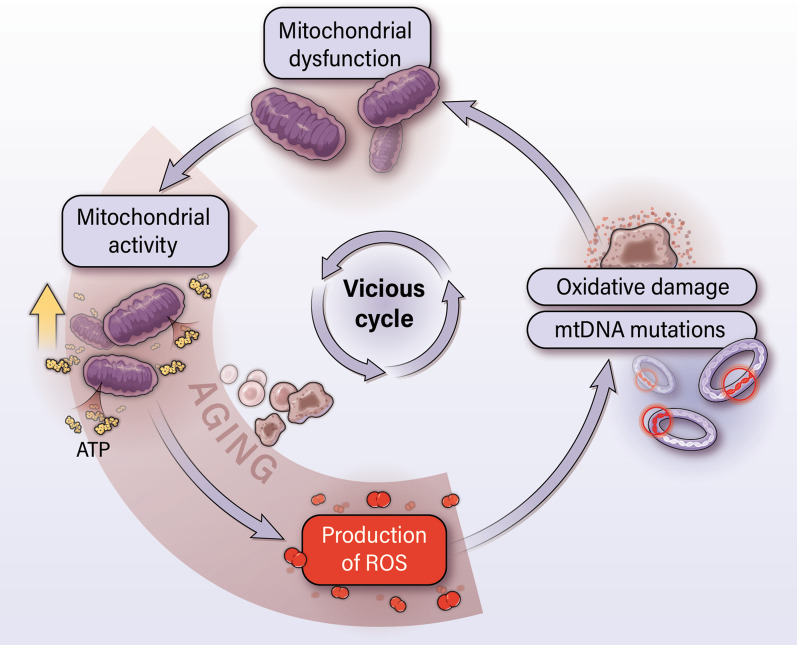Fig. 1.
Mitochondrial dysfunction develops in aging cells and cancer cells. Increased mitochondrial activity in cancer cells leads to an increased production of mtROS. Over time, mtROS damage mtDNA and cause the accumulation of mutations in mtDNA. This leads to further increases in mtROS, which eventually give way to mitochondrial dysfunction. Thereafter, a vicious cycle occurs in which mitochondrial dysfunction increases mtROS and leads to a deeper state of mitochondrial dysfunction. Cancer cells can utilize dysfunctional mitochondria to promote tumor growth and progression

